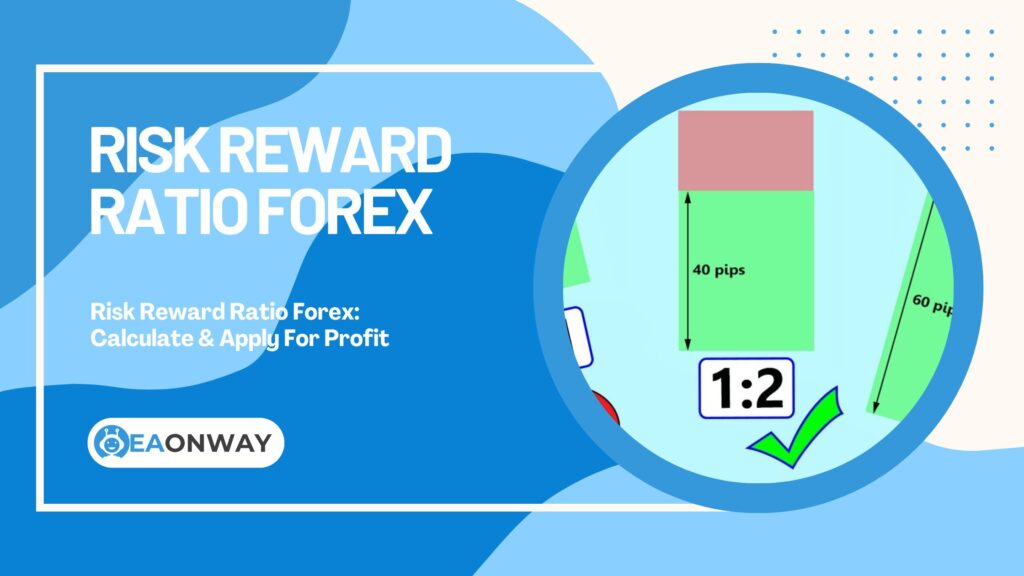Forex Trading Plan Template: Your Step-by-Step Guide to Consistent Trading
Are you venturing into the Forex market, perhaps intrigued by its potential, but wary of the undeniable risks? Many traders, especially those new to the complexities of currency trading, find themselves overwhelmed, often leading to impulsive decisions and significant financial setbacks. A primary reason for this is the absence of a clear roadmap. Using a forex trading plan template and understanding how to create trading plan forex strategies is not just advisable; it’s a fundamental requirement for navigating these volatile waters with a semblance of control and for effective trading strategy development. Without a structured approach, you’re essentially sailing without a compass.
This article delves deep into the critical process of building your own comprehensive Forex trading plan. We will guide you, step-by-step, through defining your objectives, understanding your risk profile, crafting specific entry and exit rules for rules based trading, and implementing robust money management principles. By the end, you’ll understand not just what a trading plan is, but how to construct one tailored to your individual needs, helping you to manage the inherent risks of Forex trading more effectively. This knowledge is crucial, particularly if you’re considering using Forex Expert Advisors (EAs), as even automated systems require a solid plan underpinning their logic.
Key Takeaways
Here’s a quick summary of what you need to know about creating and using a Forex trading plan:
- Foundation of Discipline: A Forex trading plan is your personal rulebook, essential for fostering trading discipline and consistency.
- Manages Emotional Trading: It helps to minimize impulsive, fear-or-greed-driven decisions by pre-defining actions for various market scenarios.
- Defines Clear Objectives: Your plan must clearly state your trading goals, risk tolerance, and the specific strategies you’ll employ.
- Comprehensive Components: Key elements include entry/exit rules, money management strategies (like position sizing and risk-reward ratios), currency pair selection, and a trading psychology plan.
- Risk Management Core: It is a primary tool for managing risk, specifying how much capital to risk per trade and overall drawdown limits.
- Essential for All Traders: Both novice and experienced traders benefit from a well-defined and regularly reviewed trading plan.
- A Living Document: Your trading plan isn’t static; it requires regular review and adaptation based on performance and changing market conditions.
- Supports Strategy Development: The process of creating a plan is integral to developing and refining your trading strategies.
- Utilize Templates Wisely: A forex trading plan template can provide structure, but it must be personalized to be effective.
What Exactly is a Forex Trading Plan?
A Forex trading plan is a comprehensive, written document that outlines every aspect of your approach to trading currencies. It details your financial goals, risk tolerance, chosen methodologies for market analysis, specific criteria for entering and exiting trades, and strict rules for money management. Think of it as your business plan for trading, providing a structured framework for decision-making and helping to ensure consistency in your actions.
Why is a Trading Plan Non-Negotiable in Forex?
A trading plan is non-negotiable in Forex because it serves as the bedrock for disciplined trading, systematically guides your decisions, and crucially helps to mitigate the impact of emotional responses like fear and greed. Without a plan, traders often make inconsistent, reactive choices, which is a common path to significant losses in the highly leveraged and fast-paced Forex market. It is a key element in shifting from gambling to a more strategic approach to trading.
The Forex market is fraught with complexities and as highlighted in our pillar page, “Understanding the Core Risks of Forex Trading,” a trading plan is one of your primary defenses. It forces you to think through your strategy, risk parameters, and responses before you are faced with the emotional pressure of live market movements. This pre-commitment to a set of rules is invaluable.
How Does a Plan Connect to Forex Risk Management?
A Forex trading plan directly connects to risk management by compelling you to predefine crucial risk parameters before any trade is placed. This includes setting your maximum risk per trade (e.g., 1-2% of capital), establishing clear stop-loss levels for every trade, determining appropriate position sizes based on your account and risk, and outlining maximum drawdown limits for your overall capital. By codifying these rules, the plan ensures risk is managed proactively and consistently, rather than reactively based on market fluctuations or emotional impulses. This structured approach is vital for capital preservation.
Is a Forex Trading Plan Only for Beginners?
No, a Forex trading plan is not just for beginners; it is an indispensable tool for traders at all levels of experience. While beginners use it to build foundational discipline and structure, seasoned traders rely on their plans to maintain consistency, adapt to evolving market conditions, and continuously refine their strategies based on performance analysis. Experienced professionals understand that discipline and adherence to a tested plan are hallmarks of sustained trading.
The Core Components: What to Include in Your Forex Trading Plan
A robust Forex trading plan should be detailed and cover all aspects of your trading activity. Using a forex trading plan template can help ensure you don’t miss critical elements, but the content must be deeply personalized.
Defining Your Trading Goals: What Do You Want to Achieve?
Your trading goals are the specific, measurable, achievable, relevant, and time-bound (SMART) objectives you aim to reach through Forex trading. These could range from achieving a certain percentage monthly return (with realistic expectations, as profits are never guaranteed), generating a specific amount of supplemental income, or growing your trading account to a particular size over a defined period. Clearly defining these goals gives your trading purpose and helps in tailoring your strategy and risk management accordingly. Be brutally honest about what’s realistic; the Forex market is not a get-rich-quick scheme.
Self-Assessment: Understanding Your Trading Personality and Risk Tolerance?
A critical, yet often overlooked, step is a thorough self-assessment to understand your trading personality and true risk tolerance. Are you patient enough for long-term trend-following, or do you prefer shorter-term trades? How do you react to losses? How much capital can you genuinely afford to lose without it impacting your financial stability or emotional well-being? Answering these questions honestly will guide your choice of trading style, timeframes, and the aggressiveness of your strategies. For example, someone with low risk tolerance should avoid highly volatile strategies or excessive leverage. Many psychological biases, like the disposition effect—where traders tend to sell winning trades too early and hold losing trades too long—can undermine even the best strategies. Recognizing these tendencies, as highlighted in behavioral finance studies (e.g., Shefrin and Statman, 1985, “The Disposition to Sell Winners Too Early and Ride Losers Too Long: Theory and Evidence,” The Journal of Finance. (Source: Wiley Online Library), is the first step to mitigating them through your plan.
Capital Allocation: How Much Can You Afford to Risk?
This component defines the total amount of capital you are dedicating to Forex trading – money that, if lost, will not affect your daily life or financial obligations. More importantly, it specifies your risk per trade, typically expressed as a small percentage (e.g., 1% or 2%) of your total trading capital. This rule is paramount for survival. For instance, if you have a $5,000 account and decide to risk 1% per trade, your maximum loss on any single trade should not exceed $50. This prevents any one trade from catastrophically damaging your account.
Choosing Your Tools: What Currency Pairs and Timeframes?
Here, you’ll specify which currency pairs you intend to trade (e.g., majors like EUR/USD, GBP/USD; minors; or exotics, keeping in mind their varying liquidity and volatility) and the chart timeframes you will use for analysis and trade execution (e.g., daily, 4-hour, 1-hour). Considerations include:
- Liquidity and Spreads: Major pairs generally have higher liquidity and tighter spreads.
- Volatility: Some pairs are more volatile than others; match this to your risk tolerance and strategy.
- Correlation: Be aware of how different pairs might move in relation to each other, especially if trading multiple pairs.
- Trading Sessions: Your availability during active market sessions for your chosen pairs (e.g., London, New York, Tokyo) can influence your choices.
- Timeframe Alignment: Ensure the timeframes you use for trend identification, signal generation, and trade management are congruent with your strategy.
Strategy Development: What Are Your Entry Rules?
This is where you detail the precise, objective conditions that must be met for you to enter a trade. These rules should be unambiguous, leaving no room for guesswork. Examples of what to define:
- Specific technical indicators and their settings: (e.g., “Enter long if the 50-period EMA crosses above the 200-period EMA on the H4 chart”).
- Chart patterns: (e.g., “Enter short on the break of a confirmed head and shoulders neckline”).
- Price action signals: (e.g., “Enter long after a bullish engulfing candle forms at a key support level”).
- Fundamental triggers (if applicable): (e.g., “Consider trades in the direction of the post-NFP release trend if technicals align”).
Your entry rules form a core part of your trading strategy development and should be testable.
Strategy Development: What Are Your Exit Rules (Profit and Loss)?
Equally crucial are your exit rules. You must define:
- Stop-Loss Orders: At what price level will you exit a trade if it moves against you? This must be determined before entering the trade. This is your primary risk control mechanism for each trade.
- Take-Profit Levels: At what price level will you exit a trade to secure profits? This could be a fixed pip target, a specific risk-reward ratio (e.g., 1:2, 1:3), or based on technical levels.
- Trailing Stops (Optional): Will you use a trailing stop to protect profits as a trade moves in your favor? If so, how will it be managed?
- Other Exit Conditions: Are there other scenarios where you might exit a trade early (e.g., unexpected major news, time-based exits if a trade doesn’t move within a certain period)?
Money Management Rules: How Will You Manage Your Capital?
This section outlines your approach to capital preservation and growth, beyond just risk per trade:
- Position Sizing Formula: How will you calculate the exact lot size for each trade to adhere to your risk-per-trade percentage? This usually involves your account size, risk percentage, stop-loss distance in pips, and the pip value of the currency pair.
- Risk-Reward Ratio (RRR): What is the minimum acceptable RRR for your trades? Many traders aim for at least 1:1.5 or 1:2, meaning the potential profit is 1.5 or 2 times the potential risk.
- Maximum Drawdown: What is the maximum percentage loss your account can sustain (overall or within a specific period) before you stop trading and re-evaluate your plan?
- Scaling In/Out: Do you have rules for adding to winning positions or taking partial profits?
Record Keeping: Why is a Trading Journal Essential?
A trading journal is essential because it provides an objective record of all your trading activities, allowing you to track performance, identify patterns in your successes and failures, and learn from your mistakes. Your plan should stipulate that you will maintain a journal and what information it will contain:
- Date and time of entry/exit
- Currency pair
- Position size
- Entry and exit prices
- Stop-loss and take-profit levels
- Reason for entry (according to your plan)
- Reason for exit
- Profit/Loss
- Screenshots of charts (optional but helpful)
- Emotional state/thoughts during the trade
Regularly reviewing your journal is key to refining your strategy and improving discipline.
Trading Psychology: How Will You Manage Emotions?
This section addresses how you plan to handle the psychological challenges of trading. Acknowledging that emotions like fear, greed, hope, and frustration are inevitable is the first step. Your plan should include strategies to manage them:
- Pre-Trade Routine: A checklist or routine to ensure you are in the right mindset before trading.
- Post-Trade Analysis: Reviewing trades objectively, regardless of outcome, to learn and reinforce plan adherence.
- Identifying Emotional Triggers: Recognizing situations or states of mind that lead to deviations from your plan.
- Rules for Dealing with Losing Streaks: (e.g., taking a break after a certain number of consecutive losses).
- Reinforcing Discipline: How will you hold yourself accountable to the plan?
Backtesting and Forward Testing: How Do You Validate Your Plan?
Before risking real capital, your trading plan (specifically its strategy component) needs validation.
- Backtesting: Manually or using software to apply your trading rules to historical price data to see how the strategy would have performed in the past. This helps identify potential flaws and provides statistical insights into expectancy.
- Forward Testing (Paper Trading/Demo Trading): Applying your plan in real-time market conditions using a demo account. This tests the practical application of your plan and your ability to follow it without financial risk.
Your plan should outline your testing process and the criteria for a strategy to be considered “validated” enough to trade live, even on a small scale initially.
Creating Your Forex Trading Plan: A Step-by-Step Guide
Now that you understand the components, let’s walk through the practical steps to create trading plan forex specific to your needs. This process is iterative and requires thought and honesty.
Step 1: Laying the Foundation – Goals and Self-Assessment
What do you need to do? Start by clearly writing down your financial goals for trading and conducting an honest self-assessment of your personality, risk tolerance, available time for trading, and current knowledge level.
This foundational step ensures your plan is aligned with who you are and what you realistically want to achieve. Don’t skip this; a plan built on unrealistic expectations or a misunderstanding of your own psychology is doomed to fail. This self-awareness is crucial for developing a personalized trading plan.
Step 2: Market and Instrument Selection
What do you need to decide? Based on your goals, risk tolerance, and available time, select the currency pairs you will focus on and the primary timeframes for your analysis and trade execution.
Document why you chose these specific pairs (e.g., liquidity, volatility, familiarity) and timeframes (e.g., aligns with your trading style – day trading, swing trading, position trading). Avoid spreading yourself too thin initially; mastering a few pairs is better than superficially trading many.
Step 3: Defining Your Trading Strategy
How do you formulate your strategy? This is where you meticulously define your rules based trading approach. Detail the exact criteria for trade entries (long and short) and exits (stop-loss, take-profit, other conditions). Specify any indicators, chart patterns, or price action signals you will use.
Your strategy should be an “if-then” set of statements: “If X, Y, and Z conditions are met, then I will enter a long trade.” Be as specific and objective as possible to eliminate ambiguity during live trading. This is the core of your trading strategy development.
Step 4: Establishing Clear Risk and Money Management Rules
What are the critical financial rules? Define your risk per trade (e.g., 1% of capital), your method for position sizing, your target risk-reward ratio for trades, and your maximum drawdown limits (daily, weekly, overall).
These rules are designed to protect your capital, the lifeblood of your trading business. Adherence to these money management rules is often more critical than the entry signals themselves for long-term survival. This is a key aspect of risk management forex.
Step 5: Documenting Your Plan – Using a Forex Trading Plan Template
How do you structure your written plan? Write everything down in a clear, organized document. A forex trading plan template can be extremely helpful here, providing a structured format with all the necessary sections. You can find reliable templates on reputable financial education websites such as Forex.com, Traders Mastermind, HowToTrade, FBS, or Jumpstart Trading.
The key is to have a physical or digital document you can refer to regularly. Sections should cover: Goals, Self-Assessment, Capital, Pairs/Timeframes, Entry Strategy, Exit Strategy, Money Management, Journaling Rules, Psychology Plan, and Review Schedule. This becomes your forex trading checklist before every trade.
Step 6: Testing Your Plan Rigorously
How do you know if your plan is viable? Before trading with real money, rigorously test your strategy using historical data (backtesting) and then in a live market environment with a demo account (forward testing or paper trading).
Collect statistics on win rate, average win/loss, maximum drawdown, profit factor, etc. Does the strategy meet your predefined goals? Are you able to follow the plan consistently even in a simulated environment? Be objective in your analysis. Data from reputable sources like the Bank for International Settlements (BIS) often highlights the complexities of market dynamics, underscoring the need for tested strategies (Source: Various BIS reports on FX market structure, e.g., BIS Quarterly Reviews which frequently discuss market behavior).
Step 7: Implementing and Reviewing Your Plan
What happens when you go live? Once your plan is tested and refined, implement it with real capital, perhaps starting with a smaller amount. Crucially, schedule regular reviews of your plan and performance (e.g., weekly and monthly).
Trading is a dynamic endeavor. Markets change, and you will evolve as a trader. Your plan must be a living document, adapted based on your trading journal analysis and changing market conditions, not on whims or emotions.
Using a Forex Trading Plan Template Effectively
While creating a plan from scratch is ideal for deep understanding, many traders start with a forex trading plan template.
What Are the Benefits of Using a Pre-Made Template?
Using a pre-made forex plan template offers several benefits, especially for beginners. It provides a ready-made structure, ensuring you consider all crucial aspects of trading. This can save time and prevent you from overlooking essential components like risk management or psychological planning. A template acts as a comprehensive checklist, guiding your thought process.
How to Customize a Generic Template to Your Needs?
You must customize any generic template extensively to fit your unique trading personality, goals, risk tolerance, and chosen strategies. A template is a starting point, not a plug-and-play solution. Go through each section and fill it with rules and parameters that are specific and meaningful to you. A plan that doesn’t reflect your individual approach is unlikely to be followed consistently.
Where Can You Find Reliable Forex Trading Plan Templates?
Reliable Forex trading plan templates can be found on reputable financial education websites, through some regulated brokers as part of their educational resources, or within trading communities focused on education rather than product sales. Quality templates are available from:
- Forex.com’s Trading Academy – Comprehensive guide with downloadable template
- Traders Mastermind – Free downloadable PDFs with detailed sections
- HowToTrade – Trading academy with free template downloads
- FBS – Regulated broker’s educational resource with example plans
- Jumpstart Trading – Educational site with customizable templates
Be cautious of templates offered as part of “guaranteed profit” systems. The value is in the structure it provides for your inputs. Focus on templates that emphasize comprehensive risk and money management sections.
The Role of Discipline and Consistency in Following Your Plan
Having a brilliant trading plan is useless if you don’t follow it. Discipline is the bridge between your plan and your actual trading results.
Why Do Traders Deviate From Their Trading Plans?
Traders often deviate from their plans due to powerful emotional triggers like fear of missing out (FOMO), greed after a winning streak, fear during a losing streak, or simple impatience. Lack of confidence in the plan, especially if not thoroughly tested, or the allure of “hot tips” can also lead to deviations. Overcoming these human tendencies is a significant challenge in developing trading discipline development.
How Can You Cultivate Trading Discipline?
Cultivating trading discipline involves several practices:
- Checklists: Use a pre-trade checklist based on your plan to ensure all criteria are met before entering.
- Routines: Establish consistent pre-market and post-market routines.
- Accountability: Share your plan with a mentor or fellow trader (if appropriate) or simply hold yourself rigorously accountable through your journal.
- Mindfulness: Practice being aware of your emotional state and consciously choosing to stick to your rules.
- Small Steps: Focus on following the plan perfectly on each trade, rather than solely on the profit/loss of that trade.
What is the Link Between a Plan and Consistent Trading Results?
A trading plan promotes consistent actions. When you apply the same set of well-tested rules for entry, exit, and money management to every trade, your results over time (though not guaranteed to be profitable) will be more reflective of your strategy’s statistical edge. Inconsistent actions lead to random results, making it impossible to determine if your strategy is viable or if your losses are due to poor execution. The plan is the key to achieving a rules based trading approach, which is foundational for consistency.
Continuous Improvement: Reviewing and Adapting Your Trading Plan
The Forex market is not static, and neither should your trading plan be. Regular review and thoughtful adaptation are crucial for long-term viability.
How Often Should You Review Your Forex Trading Plan?
You should schedule regular reviews of your Forex trading plan – for example, weekly to assess recent performance and adherence, and monthly or quarterly for a more in-depth analysis of your strategy’s effectiveness and alignment with your goals. Additionally, review your plan after significant drawdowns, prolonged periods of unexpected performance, or if you notice major shifts in market behavior for your chosen pairs.
What Key Metrics Should You Track for Plan Evaluation?
To evaluate your plan’s effectiveness, track key performance metrics from your trading journal:
- Win Rate: Percentage of winning trades.
- Risk-Reward Ratio (Achieved): The actual average RRR of your trades.
- Profit Factor: Gross profit divided by gross loss.
- Average Win and Average Loss: Size of typical winning and losing trades.
- Maximum Drawdown: Largest peak-to-trough decline in account equity.
- Trade Frequency and Duration: How often you trade and how long trades typically last.
- Adherence Score: Honestly assess how consistently you followed your plan.
When and How Should You Make Adjustments to Your Plan?
Adjustments to your plan should be data-driven, based on your performance metrics and journal analysis, not on emotional reactions to recent trades. If your metrics consistently show a weakness (e.g., stop-losses too tight, poor risk-reward), then consider incremental changes. Any significant modification to your strategy rules (entry, exit) should be backtested and forward-tested again before live implementation. Avoid making frequent, wholesale changes, as this prevents you from ever truly knowing if a strategy works.
Final Thoughts
Crafting and adhering to a comprehensive Forex trading plan is arguably one of the most critical steps you can take towards responsible and potentially more consistent Forex trading. It’s far more than just a document; it’s your business plan, your rulebook, and your psychological anchor in the often-turbulent currency markets. By meticulously defining your goals, understanding your risk tolerance, detailing your trading strategy development, specifying entry and exit rules for rules based trading, and committing to disciplined money management, you transform your trading from a haphazard gamble into a structured endeavor. Remember that using a forex trading plan template is a good start, but personalization is key.
The journey to becoming a proficient trader is continuous. Your trading plan is not a one-time creation but a dynamic tool that evolves with your experience and the markets themselves. Regular review, honest self-assessment, and unwavering discipline in execution are paramount. As emphasized in our broader discussion on “Understanding the Core Risks of Forex Trading,” a well-thought-out trading plan is an indispensable component of managing those inherent dangers. It doesn’t eliminate risk, but it provides a framework to control it, helping you navigate the Forex landscape with greater clarity and purpose.
Important Risk Warning
The information provided in this article is for educational purposes only and does not constitute financial or investment advice. Forex trading involves a substantial risk of loss and is not suitable for all investors. The high degree of leverage available in Forex trading can work against you as well as for you. Before deciding to trade Forex, you should carefully consider your investment objectives, level of experience, and risk appetite. There is a possibility that you could sustain a loss of some or all of your initial investment and therefore you should not invest money that you cannot afford to lose. You should be aware of all the risks associated with Forex trading and seek advice from an independent financial advisor if you have any doubts. Past performance is not indicative of future results. EaOnWay.com does not provide investment advice or recommendations.








